Code
HCS28773
Weight
14.52 Kg / 32.01 lbs
Size
Height
42cm (17") Width
35cm (14") Depth
17cm (7") Material
Brass
Availability
Available

Safe Payment
We accept Paypal, Money Transfer, Bank Transfer
Confidence
Protection covers your purchase and personal data.
Worldwide Delivery
We ship Worldwide, except Russia.Shipping cost US$25.2 for upto 0.5 kgs

Hotline
Talk to help line for your question on 9841267335About Chocolate Oxidized
This Nepali Statue Of Saraswati, [sand Casting], [chocolate Oxidized] has been meticulously treated with a chocolate color antique patina. The intention behind this patina is to replicate the appearance of a copper statue that has gracefully aged over a century. Unlike a simple coat of paint, this patina is not applied superficially and is designed to endure. It undergoes an artificial oxidation process that adds depth and character, while also serving as a protective layer against natural oxidation.
By imitating the natural aging process, the chocolate color antique patina lends an air of authenticity and vintage charm to the Nepali Statue Of Saraswati, [sand Casting], [chocolate Oxidized]. This carefully crafted finish ensures that the patina remains intact for an extended period, offering longevity and resistance to wear. The result is a unique piece that captures the essence of a time-worn copper statue, evoking a sense of history and artistic heritage.
This Nepali Statue Of Saraswati, [sand Casting], [chocolate Oxidized] has been meticulously treated with a chocolate color antique patina. The intention behind this patina is to replicate the appearance of a copper statue that has gracefully aged over a century. Unlike a simple coat of paint, this patina is not applied superficially and is designed to endure. It undergoes an artificial oxidation process that adds depth and character, while also serving as a protective layer against natural oxidation.
By imitating the natural aging process, the chocolate color antique patina lends an air of authenticity and vintage charm to the Nepali Statue Of Saraswati, [sand Casting], [chocolate Oxidized]. This carefully crafted finish ensures that the patina remains intact for an extended period, offering longevity and resistance to wear. The result is a unique piece that captures the essence of a time-worn copper statue, evoking a sense of history and artistic heritage.
Process: Sand Casting
This Nepali Statue Of Saraswati, [sand Casting], [chocolate Oxidized] has been created using the sand casting system, also known as sand molding casting. This widely employed manufacturing process utilizes a sand mold to produce metal products and components in various sizes and shapes. Sand casting holds significant popularity in the industry, accounting for approximately 60% of all metal castings. The sand casting process involves six primary steps. First, a pattern or replica of the desired sculpture, in this case, Nepali Statue Of Saraswati, [sand Casting], [chocolate Oxidized], is created using a material like wood or metal. The pattern is then placed in a flask, which is a box-like structure divided into two halves. The next step involves packing the flask tightly with specially formulated molding sand, creating a mold cavity that matches the shape of the pattern. The pattern is subsequently removed, leaving behind a negative impression of the sculpture within the sand mold. Read More . . .
This Nepali Statue Of Saraswati, [sand Casting], [chocolate Oxidized] has been created using the sand casting system, also known as sand molding casting. This widely employed manufacturing process utilizes a sand mold to produce metal products and components in various sizes and shapes. Sand casting holds significant popularity in the industry, accounting for approximately 60% of all metal castings. The sand casting process involves six primary steps. First, a pattern or replica of the desired sculpture, in this case, Nepali Statue Of Saraswati, [sand Casting], [chocolate Oxidized], is created using a material like wood or metal. The pattern is then placed in a flask, which is a box-like structure divided into two halves. The next step involves packing the flask tightly with specially formulated molding sand, creating a mold cavity that matches the shape of the pattern. The pattern is subsequently removed, leaving behind a negative impression of the sculpture within the sand mold. Read More . . .
Brief Introduction :
In Hinduism, Saraswati is the goddess of knowledge, music, arts, science, and technology. She is the consort of Brahma, also revered as His Shakti.
The name Saraswati came from "saras" (meaning "flow") and "wati" (meaning "a woman"). So, Saraswati is a symbol of knowledge; its flow (or growth) is like a river and knowledge is supremely alluring, like a beautiful woman. She is depicted as a beautiful fair Goddess with Four arms, wearing a spotless white saree and seated on a white lotus. She is also known as "Sharada", "Vani" and "Vagdevi" (both meaning "speech").
Iconography :The name Saraswati came from "saras" (meaning "flow") and "wati" (meaning "a woman"). So, Saraswati is a symbol of knowledge; its flow (or growth) is like a river and knowledge is supremely alluring, like a beautiful woman. She is depicted as a beautiful fair Goddess with Four arms, wearing a spotless white saree and seated on a white lotus. She is also known as "Sharada", "Vani" and "Vagdevi" (both meaning "speech").
he goddess Saraswati is often depicted as a beautiful woman dressed in pure white often seated on a white lotus, which symbolizes that she is founded in the experience of the Absolute Truth. Thus, she not only has the knowledge but also the experience of the Highest Reality. She is mainly associated with the color white, which signifies the purity of true knowledge. Occasionally, however, she is also associated with the colour yellow, the colour of the flowers of the mustard plant that bloom at the time of her festival in the spring. She is adorned with simple jewels and gold, unlike the goddess Lakshmi; representing her preference of knowledge over worldly material things.
She is generally shown to have four arms, which represent the four aspects of human personality in learning: mind, intellect, alertness, and ego. Alternatively, these four arms also represent the 4 Vedas, the primary sacred books for Hindus. The Vedas, in turn, represent the 3 forms of literature:
Poetry â the Rigveda contains hymns, representing poetry
Prose â Yajurveda contains prose
Music â Samaveda represents music.
The four hands also depict this thus â prose is represented by the book in one hand, poetry by the garland of crystal, music by the veena. The pot of sacred water represents purity in all of these three, or their power to purify human thought.
She is shown to hold the following in her hands:
A book, which is the sacred Vedas, representing the universal, divine, eternal, and true knowledge as well as her perfection of the sciences and the scriptures.
A mala (rosary) of crystals, representing the power of meditation and spirituality.
A pot of sacred water, representing creative and purification powers.
The vina, a musical instrument that represents her perfection of all arts and sciences. Saraswati is also associated with anurāga, the love for and rhythm of music which represents all emotions and feelings expressed in speech or music.
The beautiful human form of Saraswati comes to the fore in this English translation of the Saraswati hymn:
"May Goddess Saraswati, who is fair like the jasmine-colored moon, and whose pure white garland is like frosty dew drops, who is adorned in radiant white attire, on whose beautiful arm rests the veena, and whose throne is a white lotus,who is surrounded and respected by the Gods, protect me.May you fully remove my lethargy, sluggishness, and ignorance."
A hamsa or swan is often located next to her feet. The sacred bird, if offered a mixture of milk and water, is said to be able to drink the milk alone. It thus symbolizes discrimination between the good and the bad or the eternal and the evanescent. Due to her association with the bird, Saraswati is also referred to as Hamsavahini, which means "she who has a hamsa as her vehicle".
She is usually depicted near a flowing river, which may be related to her early history as a river goddess.
Sometimes a peacock is shown beside the goddess. The peacock represents arrogance and pride over its beauty, and by having a peacock as her mount, the Goddess teaches not to be concerned with external appearance and to be wise regarding the eternal truth.
Mythology :She is generally shown to have four arms, which represent the four aspects of human personality in learning: mind, intellect, alertness, and ego. Alternatively, these four arms also represent the 4 Vedas, the primary sacred books for Hindus. The Vedas, in turn, represent the 3 forms of literature:
Poetry â the Rigveda contains hymns, representing poetry
Prose â Yajurveda contains prose
Music â Samaveda represents music.
The four hands also depict this thus â prose is represented by the book in one hand, poetry by the garland of crystal, music by the veena. The pot of sacred water represents purity in all of these three, or their power to purify human thought.
She is shown to hold the following in her hands:
A book, which is the sacred Vedas, representing the universal, divine, eternal, and true knowledge as well as her perfection of the sciences and the scriptures.
A mala (rosary) of crystals, representing the power of meditation and spirituality.
A pot of sacred water, representing creative and purification powers.
The vina, a musical instrument that represents her perfection of all arts and sciences. Saraswati is also associated with anurāga, the love for and rhythm of music which represents all emotions and feelings expressed in speech or music.
The beautiful human form of Saraswati comes to the fore in this English translation of the Saraswati hymn:
"May Goddess Saraswati, who is fair like the jasmine-colored moon, and whose pure white garland is like frosty dew drops, who is adorned in radiant white attire, on whose beautiful arm rests the veena, and whose throne is a white lotus,who is surrounded and respected by the Gods, protect me.May you fully remove my lethargy, sluggishness, and ignorance."
A hamsa or swan is often located next to her feet. The sacred bird, if offered a mixture of milk and water, is said to be able to drink the milk alone. It thus symbolizes discrimination between the good and the bad or the eternal and the evanescent. Due to her association with the bird, Saraswati is also referred to as Hamsavahini, which means "she who has a hamsa as her vehicle".
She is usually depicted near a flowing river, which may be related to her early history as a river goddess.
Sometimes a peacock is shown beside the goddess. The peacock represents arrogance and pride over its beauty, and by having a peacock as her mount, the Goddess teaches not to be concerned with external appearance and to be wise regarding the eternal truth.
In the Rigveda, Saraswati is a river as well as its personification as a goddess. In the post-Vedic age, she began to lose her status as a river goddess and became increasingly associated with literature, arts, music, etc. In Hinduism, Saraswati represents intelligence, consciousness, cosmic knowledge, creativity, education, enlightenment, music, the arts, eloquence and power. Hindus worship her not only for "academic knowledge", but for "divine knowledge" essential to achieve moksha.
In some Puranas (like Skanda Purana) she is daughter of Shiva (Shivaanujaa) and in some Tantras with Ganesha. However across India she is worshipped as the wife of Lord Brahma. In the Devi Mahatyam it mentions her as Brahmapatni. According to some sects Saraswati was born from the left body part of Vishnu when Vishnu was in his eternal sleep.
The original (spiritual) forms of devas including Saraswati are present in the spiritual world:
In the center reside the deities of fire, sun and moon, Kurma-avatara, Ananta Sesha, and Garuda, the master of the three Vedas. The Vedic hymns and all sacred mantras also stay in that holy place, which is made of all the Vedas, and which is known in the Smriti-sastra [Scriptures of Remembrance] as the yoga-pitha [Sanctuary of Union]. (Padma Purana Uttara-khanda 256.23)
Accompanied by Lakshmi and other associates, the chatur-vyuha [Four Expansions] headed by Lord Vasudeva are manifest in the eight directions, beginning with the east. In the directions beginning with the southeast, the palaces of Lakshmi, Saraswati, Rati, and Kanti respectively are situated.[clarification needed]
According to Vedanta she is considered to be the feminine energy and knowledge aspect (Shakti) of Brahma, as one of many aspects of Adi Shakti.
In some Puranas (like Skanda Purana) she is daughter of Shiva (Shivaanujaa) and in some Tantras with Ganesha. However across India she is worshipped as the wife of Lord Brahma. In the Devi Mahatyam it mentions her as Brahmapatni. According to some sects Saraswati was born from the left body part of Vishnu when Vishnu was in his eternal sleep.
The original (spiritual) forms of devas including Saraswati are present in the spiritual world:
In the center reside the deities of fire, sun and moon, Kurma-avatara, Ananta Sesha, and Garuda, the master of the three Vedas. The Vedic hymns and all sacred mantras also stay in that holy place, which is made of all the Vedas, and which is known in the Smriti-sastra [Scriptures of Remembrance] as the yoga-pitha [Sanctuary of Union]. (Padma Purana Uttara-khanda 256.23)
Accompanied by Lakshmi and other associates, the chatur-vyuha [Four Expansions] headed by Lord Vasudeva are manifest in the eight directions, beginning with the east. In the directions beginning with the southeast, the palaces of Lakshmi, Saraswati, Rati, and Kanti respectively are situated.[clarification needed]
According to Vedanta she is considered to be the feminine energy and knowledge aspect (Shakti) of Brahma, as one of many aspects of Adi Shakti.


![Nepali Statue Of Saraswati, [sand Casting], [chocolate Oxidized]](https://handicraftseller.com/uploads/pics/product/thumb/2023/03/28773.jpg)
![Nepali Statue Of Saraswati, [sand Casting], [chocolate Oxidized]](https://handicraftseller.com/uploads/pics/product/thumb/2023/03/28773_0.jpg)
![Nepali Statue Of Saraswati, [sand Casting], [chocolate Oxidized]](https://handicraftseller.com/uploads/pics/product/thumb/2023/03/28773_1.jpg)
![Nepali Statue Of Saraswati, [sand Casting], [chocolate Oxidized]](https://handicraftseller.com/uploads/pics/product/thumb/2023/03/28773_2.jpg)

 of Saraswati On Swan,
of Saraswati On Swan, 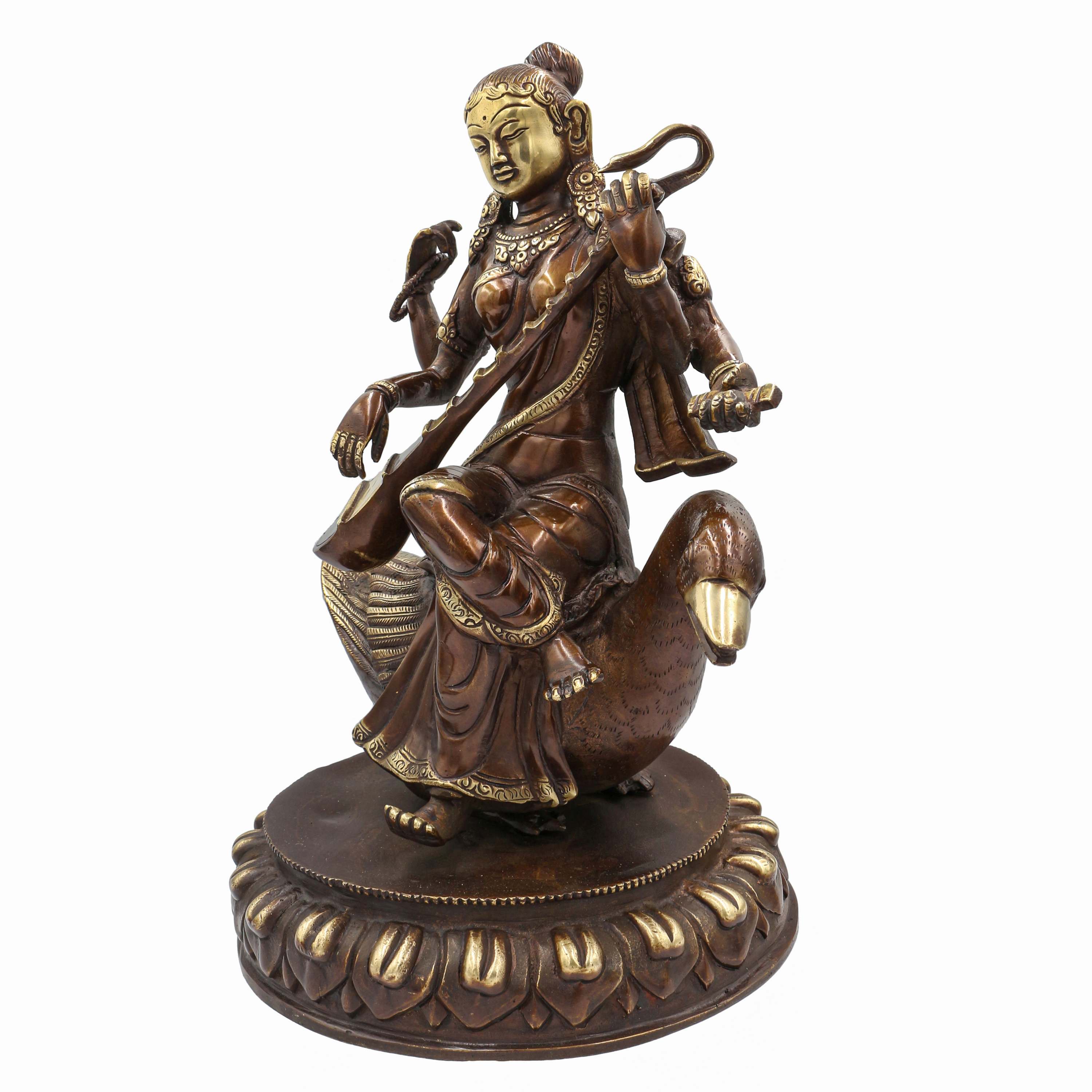 of Saraswati On Swan,
of Saraswati On Swan, 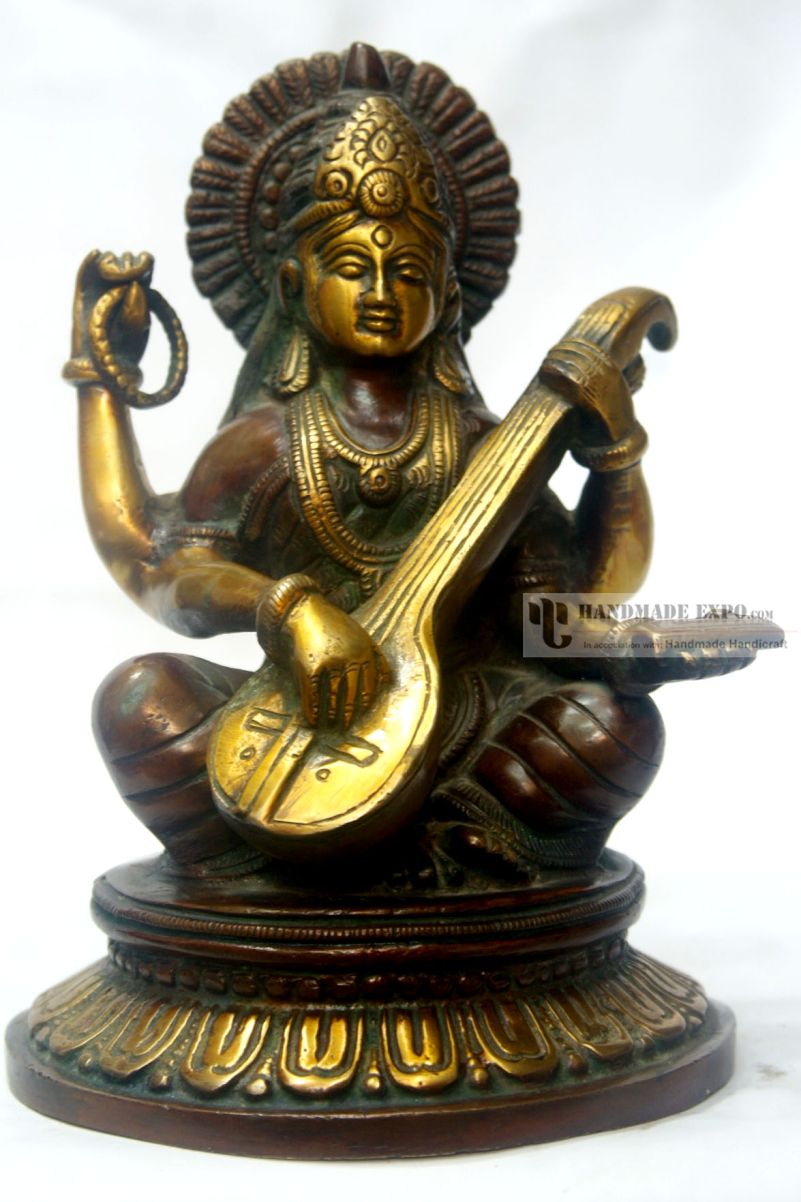
 of Saraswati,
of Saraswati, 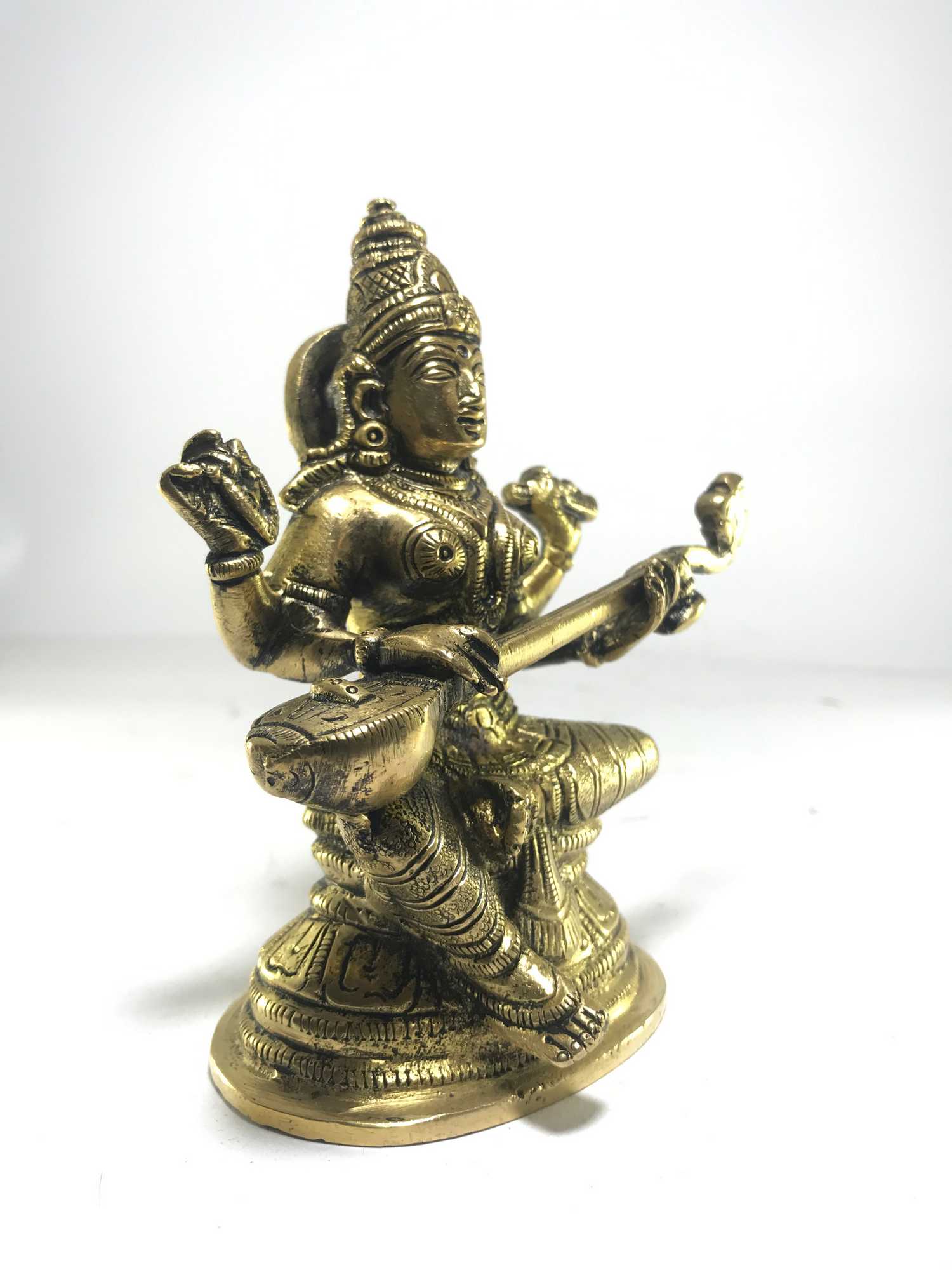 of Saraswati,
of Saraswati,  of Saraswati
of Saraswati 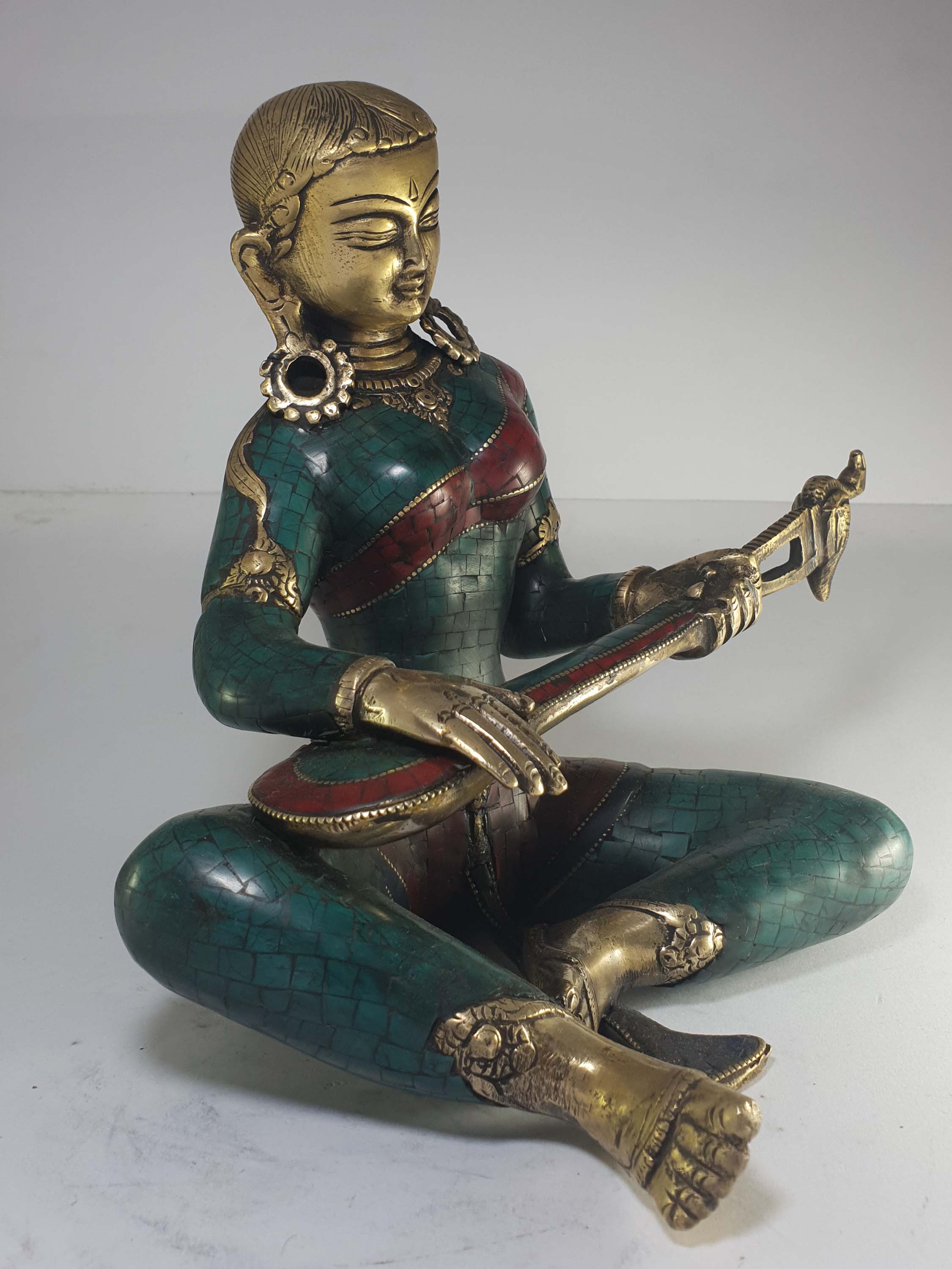 of Saraswati
of Saraswati 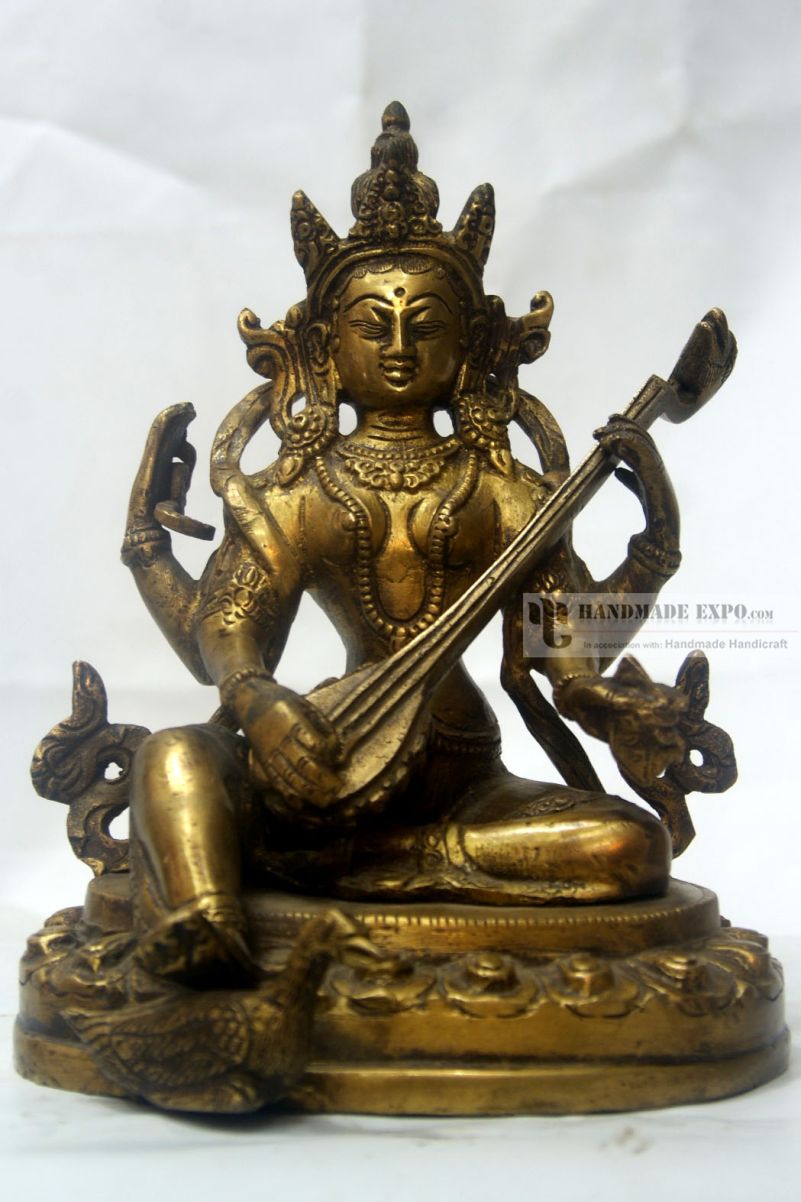 of Saraswati" title="Statue
of Saraswati" title="Statue  of Saraswati,
of Saraswati, 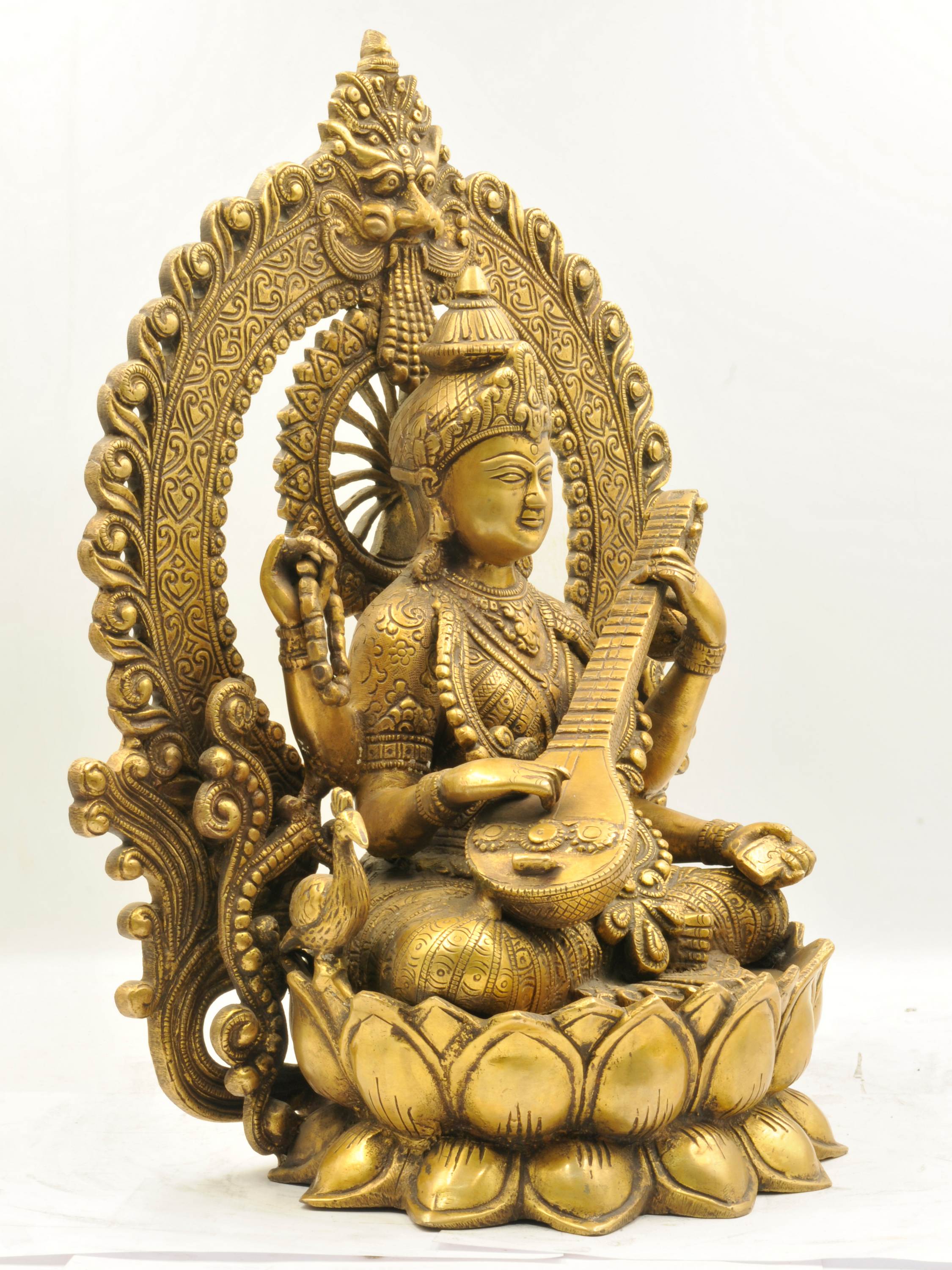 of Saraswati,
of Saraswati, 
 of Saraswati,
of Saraswati,  of Saraswati,
of Saraswati,  of Saraswati" title="Statue
of Saraswati" title="Statue 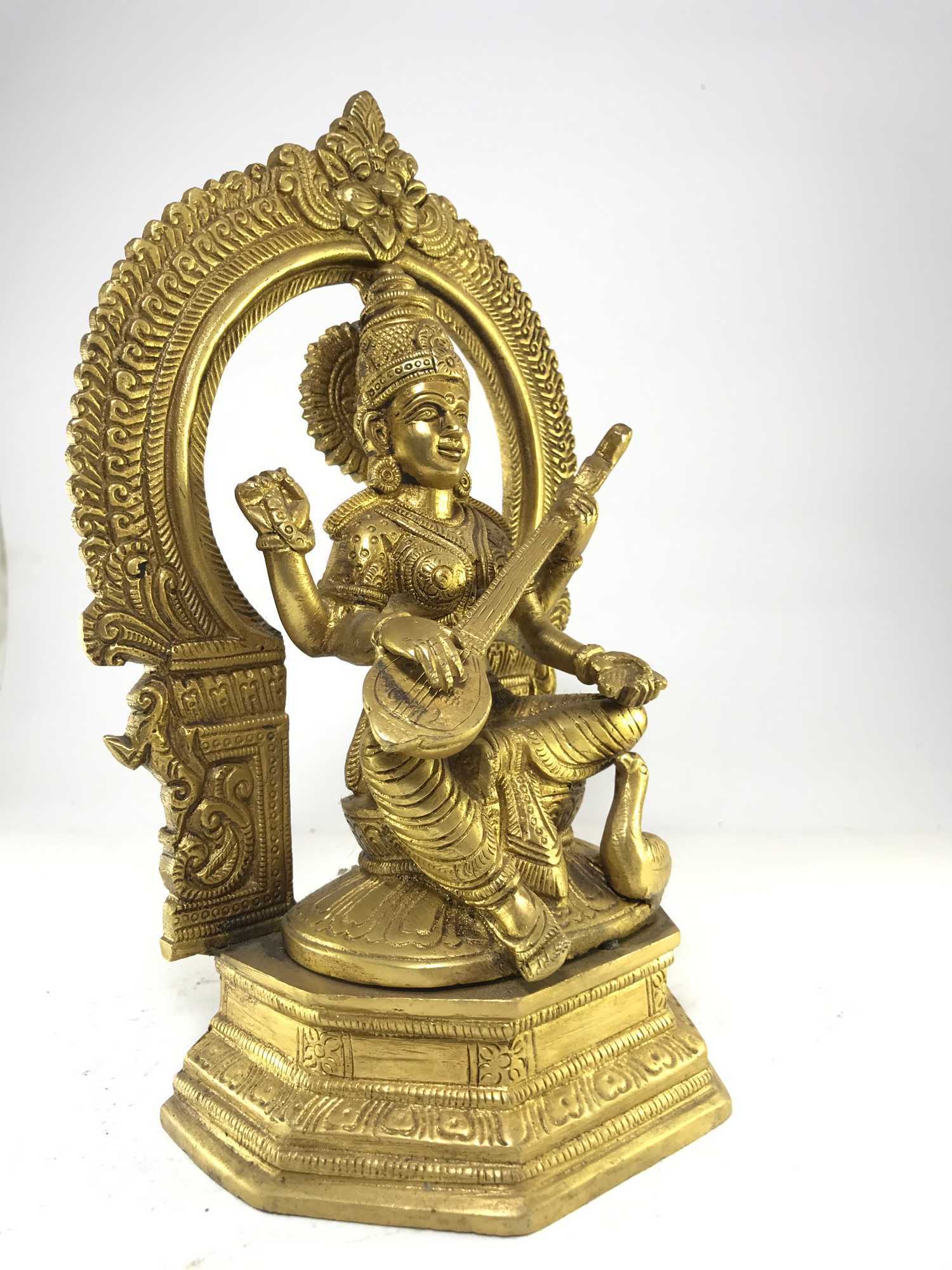 of Saraswati" title="Statue
of Saraswati" title="Statue  of Saraswati,
of Saraswati,  of Saraswati,
of Saraswati,